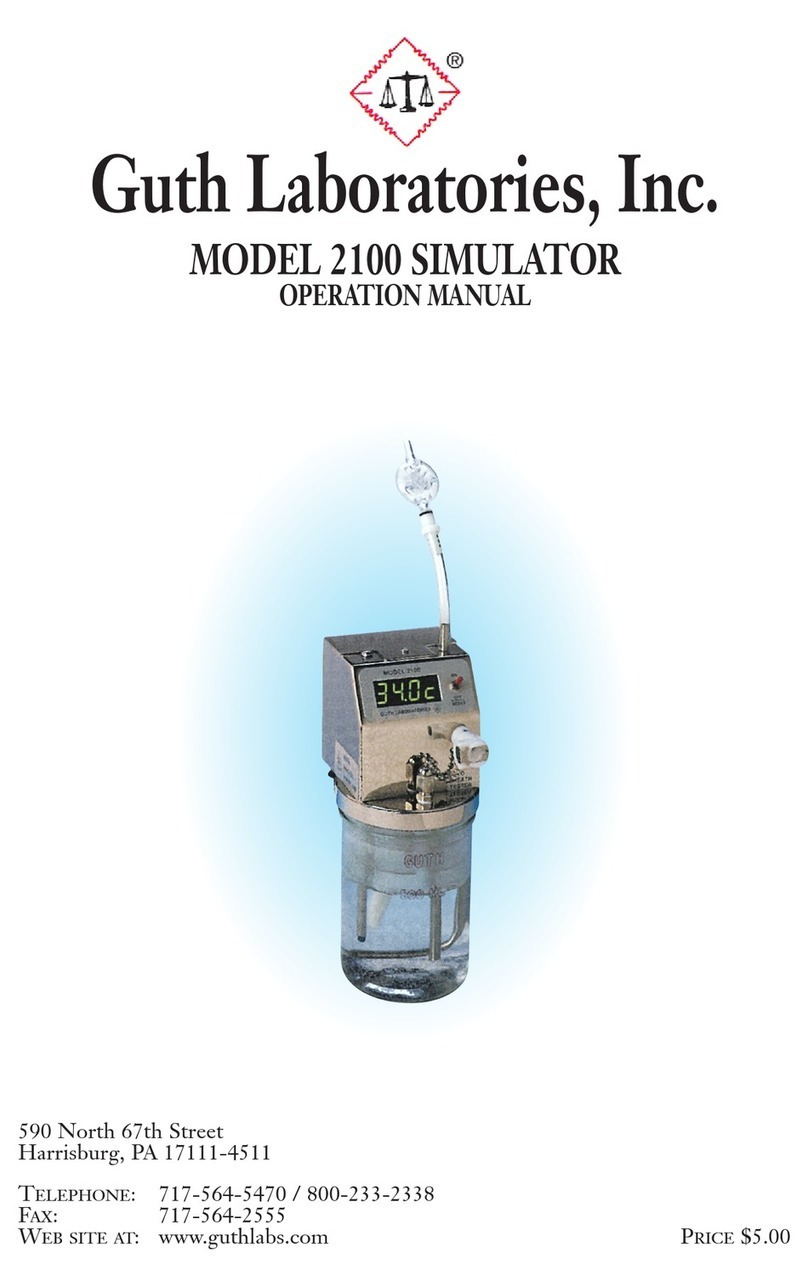
INTRODUCTION
The Guth Model 12V500 Alcohol Breath Simulator is a State-of-the-Art, electroni-
cally temperature controlled, water-alcohol instrument for the purpose of providing
a precise calibration standard for testing or calibration of alcohol breath analyzers.
The Model 12V500 is the rst simulator of its kind to incorporate dual temperature
probes to independently control and monitor the temperature of the solution. The
temperature of the water-alcohol solution placed in the simulator is maintained at
34° C ± .05° C or better. The inlet and outlet port pathways have been designed to
be an integral part of the one piece heated aluminium top housing thus allowing
uniform heating and reduction of condensation. The new LCD graphics display has
a temperature resolution of .01° C and will display simulator status to the user in
the form of messages and status codes. As with all Guth products the 12V500 has
been engineered using the highest quality components to give reliable, accurate and
trouble free operation.
CERTIFIED SIMULATOR SOLUTION STANDARD
PLEASE NOTE: It is imperative your Simulator Solution be of the highest quality in
ordertoacquirethescienticandlegalstandardsofacceptance.
To establish a precise and accurate calibration standard when using a Guth Simulator,
GUTH LABORATORIES, INC. recommends using Guth Certied Simulator Solu-
tion. Guth Laboratories, Inc., a pioneer and leader in the science of alcohol breath
testing, has provided Certied Simulator Solution to state, municipal, and local law
enforcement agencies for many years.
************
All Guth Certied Simulator Solutions are traceable to NIST (National Institute of
Standards and Technology).
************
Guth Certied Simulator Solutions are prepared in standard concentrations of .02%,
.04%, .05%, .08%, .10%, .15%, .20%, and .30%. Other special concentrations are
available upon request. Please contact Guth Laboratories, Inc. for availability and
pricing:
Toll Free: (800) 233-2338 Fax: (717) 564-2555
or visit our web site at: www.guthlabs.com
STORAGE: Store Simulator Solution in a cool location. Do not place
solution in a freezer.
- DO NOT REFRIGERATE SIMULATOR
1




























